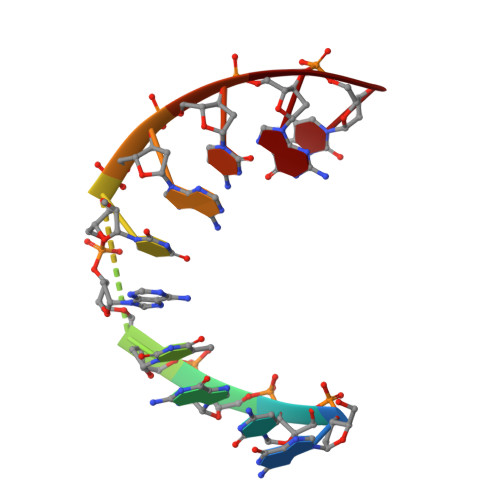Interplay of structure, hydration and thermal stability in formacetal modified oligonucleotides: RNA may tolerate nonionic modifications better than DNA.
Kolarovic, A., Schweizer, E., Greene, E., Gironda, M., Pallan, P.S., Egli, M., Rozners, E.(2009) J Am Chem Soc 131: 14932-14937
- PubMed: 19824732
- DOI: https://doi.org/10.1021/ja904926e
- Primary Citation of Related Structures:
3HR3 - PubMed Abstract:
DNA and RNA oligonucleotides having formacetal internucleoside linkages between uridine and adenosine nucleosides have been prepared and studied using UV thermal melting, osmotic stress, and X-ray crystallography. Formacetal modifications have remarkably different effects on double helical RNA and DNA-the formacetal stabilizes the RNA helix by +0.7 degrees C but destabilizes the DNA helix by -1.6 degrees C per modification. The apparently hydrophobic formacetal has little effect on hydration of RNA but decreases the hydration of DNA, which suggests that at least part of the difference in thermal stability may be related to differences in hydration. A crystal structure of modified DNA shows that two isolated formacetal linkages fit almost perfectly in an A-type helix (decamer). Taken together, the data suggest that RNA may tolerate nonionic backbone modifications better than DNA. Overall, formacetal appears to be an excellent mimic of phosphate linkage in RNA and an interesting modification for potential applications in fundamental studies and RNA-based gene control strategies, such as RNA interference.
Organizational Affiliation:
Department of Chemistry and Chemical Biology, Northeastern University, Boston, Massachusetts 02115, USA.














